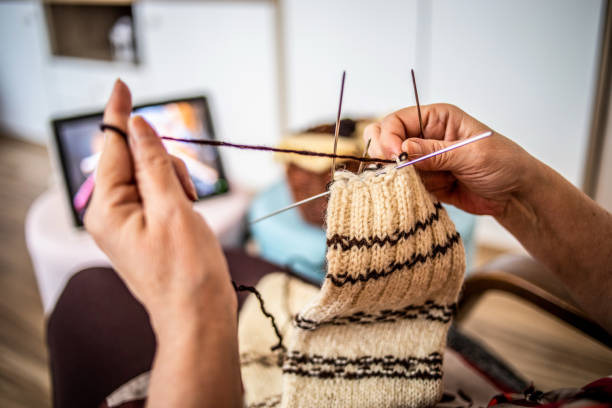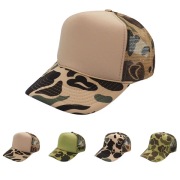The knit cotton cardigan has become an enduring symbol of versatile style. Known for its comfort, breathability, and practicality, it bridges the gap between cozy outerwear and lightweight layering essential. Unlike bulkier sweaters made from wool or synthetic fibers, a knit cotton cardigan offers a smoother, more breathable alternative that works in nearly every season. Whether worn over a tee on a cool summer evening or layered with a collared shirt during colder months, this piece has secured its place as a timeless wardrobe staple.
Cotton, as a natural fiber, holds several advantages in knitwear. It is soft on the skin, hypoallergenic, and absorbs moisture efficiently, making it particularly suitable for those with sensitive skin or those who prefer natural materials. When woven into a knit, it retains enough flexibility to contour comfortably to the body while maintaining its structure. A knit cotton cardigan embodies this blend of comfort and resilience, offering wearers a garment that feels as good as it looks.
The Evolution of the Cardigan in Contemporary Fashion
Originally popularized in the 19th century and gaining mass appeal during the early 20th century, the cardigan has long been associated with both formality and laid-back charm. Its button-down front and open-front variations make it adaptable to different fashion preferences and settings. The knit cotton cardigan, in particular, has evolved to reflect the contemporary fashion ethos prioritizing minimalism, sustainability, and utility.
Designers and brands continue to reimagine the cardigan in numerous styles, ranging from cropped and fitted versions to oversized silhouettes. Ribbed textures, patterned knits, and innovative stitching further elevate this humble piece into a fashion-forward garment. Unlike heavy woolen cardigans that can overheat or irritate, the cotton version allows for greater breathability without sacrificing warmth. This makes it ideal for travel, office wear, or layering over loungewear at home.
The Craft Behind Cotton Knitwear Production
Crafting a knit cotton cardigan involves meticulous planning and execution, starting from the selection of high-quality cotton yarns. The quality of cotton used plays a crucial role in determining the texture, longevity, and overall aesthetic of the final garment. Combed cotton, for example, is smoother and more refined than carded cotton, offering a more luxurious finish. Organic cotton has also gained popularity among environmentally-conscious brands and consumers.
Once the yarn is selected, modern knitting machines are employed to construct the fabric. Flatbed knitting machines allow for precision in panel design and are often used in high-quality cardigan production. After knitting, the pieces are linked or sewn together, and additional processes like washing, steaming, and pressing are applied to enhance softness and fit. The design of the knit cotton cardigan allows it to drape naturally on the body, delivering a flattering silhouette with just the right balance of ease and structure.
Sustainable Benefits of Cotton Cardigans
As the demand for sustainable fashion increases, cotton knitwear has found itself in the spotlight. Cotton, being biodegradable and renewable, serves as a more eco-friendly option compared to synthetic alternatives. Brands that focus on ethical sourcing, fair labor practices, and reduced water usage in cotton cultivation contribute to a lower environmental footprint.
Recyclable and organic cotton cardigans are increasingly entering the market, appealing to environmentally-conscious consumers. The longevity of a knit cotton cardigan also contributes to its sustainability. Well-crafted cardigans can last for years with proper care, encouraging a slow fashion mindset and reducing the need for frequent replacements. In contrast to fast fashion’s short-lived trends, cotton cardigans offer timeless appeal with a lower environmental impact.
Styling Versatility of the Knit Cotton Cardigan
One of the knit cotton cardigan’s strongest assets is its incredible versatility. It can be dressed up or down depending on the occasion. A slim-fit cardigan worn over a button-up shirt provides a polished look suitable for business casual settings, while a chunky, relaxed cardigan thrown over a plain t-shirt gives off a casual, effortless vibe.
Cardigans also cater to seasonal transitions with ease. During spring or fall, when temperatures fluctuate throughout the day, the knit cotton cardigan provides just the right level of warmth without feeling oppressive. Paired with jeans, skirts, or tailored trousers, it serves as an adaptable layering piece that never feels out of place. For travelers, the cardigan’s packable nature and wrinkle resistance make it an ideal garment for on-the-go styling.
Manufacturing Quality: What Sets Premium Cardigans Apart
Not all cardigans are created equal. The difference lies in the attention to detail, choice of materials, and craftsmanship. Premium manufacturers focus on producing cardigans that withstand wear while maintaining their shape and color. Reinforced seams, high-stitch density, and double-ply yarns are just a few features that distinguish a well-made knit cotton cardigan from its lower-end counterparts.
These manufacturers also invest in advanced knitting technologies that allow for seamless construction and intricate pattern work. The dyeing process, too, can impact the garment’s quality. Reactive dyes, which bond chemically with cotton fibers, offer vibrant and long-lasting color with minimal fading over time. Final finishing processes like enzyme washing further enhance softness, making each wear feel as fresh as the first.
Fit, Function, and Comfort in Cardigan Design
Fit is an essential element in cardigan design. The knit structure of cotton allows for natural elasticity, providing comfort and freedom of movement. However, too loose a knit can lead to loss of shape, while overly tight knits may restrict motion. Finding the right balance is key to creating a cardigan that not only looks flattering but feels great to wear.
Functional design features like pockets, button closures, or belt ties add both practicality and flair. Designers are also increasingly incorporating gender-neutral styles, reflecting the garment’s broad appeal. Whether for lounging at home or stepping out for an evening event, the knit cotton cardigan adapts easily to the moment. Its breathable fabric makes it suitable for all-day wear, especially when temperature regulation and layering flexibility are important.
The Role of Innovation in Cotton Knitwear
Modern cotton cardigan production isn’t just about tradition it’s also about innovation. Technological advancements in yarn spinning, dyeing, and knitting have opened the door to more sophisticated designs. For example, 3D knitting technology now allows cardigans to be created with fewer seams, resulting in better fit and less material waste.
Designers are also experimenting with hybrid blends that retain cotton’s breathability while improving stretch or resilience. Innovations in eco-dyes and waterless dyeing techniques are contributing to more sustainable production methods. These innovations allow brands to meet growing consumer demand for both style and responsibility, offering products that resonate with evolving values and preferences.
FAQs
What are the benefits of a knit cotton cardigan compared to wool?
Cotton is lighter, more breathable, and less likely to cause skin irritation than wool. It’s ideal for year-round wear and easier to care for.
Can I wear a knit cotton cardigan in summer?
Yes, especially if it’s made from lightweight cotton. It’s perfect for cool evenings or air-conditioned environments.
How should I wash my cotton cardigan?
Machine wash on a gentle cycle with cold water or hand wash. Lay flat to dry to maintain its shape and texture.
Is cotton knitwear sustainable?
When sourced responsibly, cotton is biodegradable and renewable. Look for organic or recycled cotton options for better sustainability.
What styles of knit cotton cardigan are trending now?
Oversized fits, cropped versions, and gender-neutral designs are popular. Textured knits and muted earth tones are also in demand.
Conclusion
The knit cotton cardigan continues to thrive as a symbol of relaxed sophistication. Its gentle texture, year-round usability, and broad stylistic appeal make it a must-have for any wardrobe. Whether you’re seeking comfort, sustainability, or fashion-forward design, a well-made cotton cardigan delivers on all fronts. For brands and designers looking to bring their cardigan visions to life, few partners offer the combination of quality, innovation, and reliability as knitika.
Author Bio:
Written by Priya Deshmukh, a textile design professional with a strong focus on sustainable knitwear solutions. She collaborates closely with knitika to explore modern applications of traditional fibers. To learn more about their thoughtfully crafted collections, visit their website.




